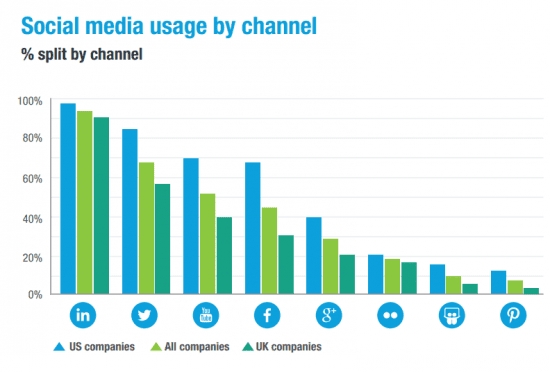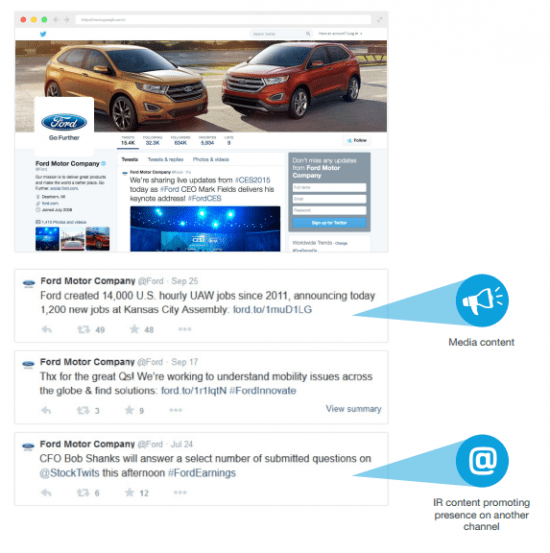Insights and examples of how the top 500 UK and US corporates integrating social media into their corporate comms strategy
This extensive research from Investis is positioned as one of the first reports to showcase how large companies in the UK and US are using social media specifically for corporate communications. We're recommending it to readers since it provides case studies and visual examples of how these public corporates are using the 8 main social media channels (LinkedIn, Facebook, Twitter, Google+, YouTube, Flickr, Slideshare and Pinterest), for corporate communications. Companies are scored to an index and the top 100 companies are ranked, with exploratory comments on best practice tactics.
It shows that there has been a rise in the FTSE 100 companies linking their corporate websites to social media from 35% three years ago to 72% today, and a rise of US SEP 100 linked companies from 61% to 89%.
There are some interesting correlations between levels of activity in the the report:
- Companies engaging with social media are gaining more views and social interaction.
- On Facebook alone, companies who respond to wall posts are seeing more 'Likes' than those who do not acknowledge.
- Companies tweeting 30x or more each month, averaged 20,800 followers compared to 2,456 from those who were tweeting less.
Which social media channels are most popular?
Companies are cautious in using social media networks and using more established networks, rather than using Slideshare. LinkedIn is the most popular channel which is being used successfully by the technologies sectors, followed by Twitter (best practice amongst the Automobiles and Parts sector) and YouTube (again best practice by the technologies sect0r).

What's the success for Ford with their Twitter strategy?
The report illustrates how companies are using social media, scoring them with an index and ranking the top 100. It provides case studies for each social media channel and here is how Ford are using Twitter for their corporate communications.

Their success is derived from:
- Sharing corporate, IR, Careers, Media ad Consumer content and have dedicated accounts (for CSR and Career) and other consumer/product accounts.
- Respond to tweets and retweet third party content.
- Account linked to and from their corporate account and branded.
- Perceived to be a 'safe space'.
- Use quotes from Directors and Employees which reflect it to be a 'market leader'. Discuss 'what they know best - cars and commercial vehicles'.
Download their Social Media for Corporate Communications report to read more case studies and find out who are the top ranking US and UK corporates for using social media and why (registration is required).

















